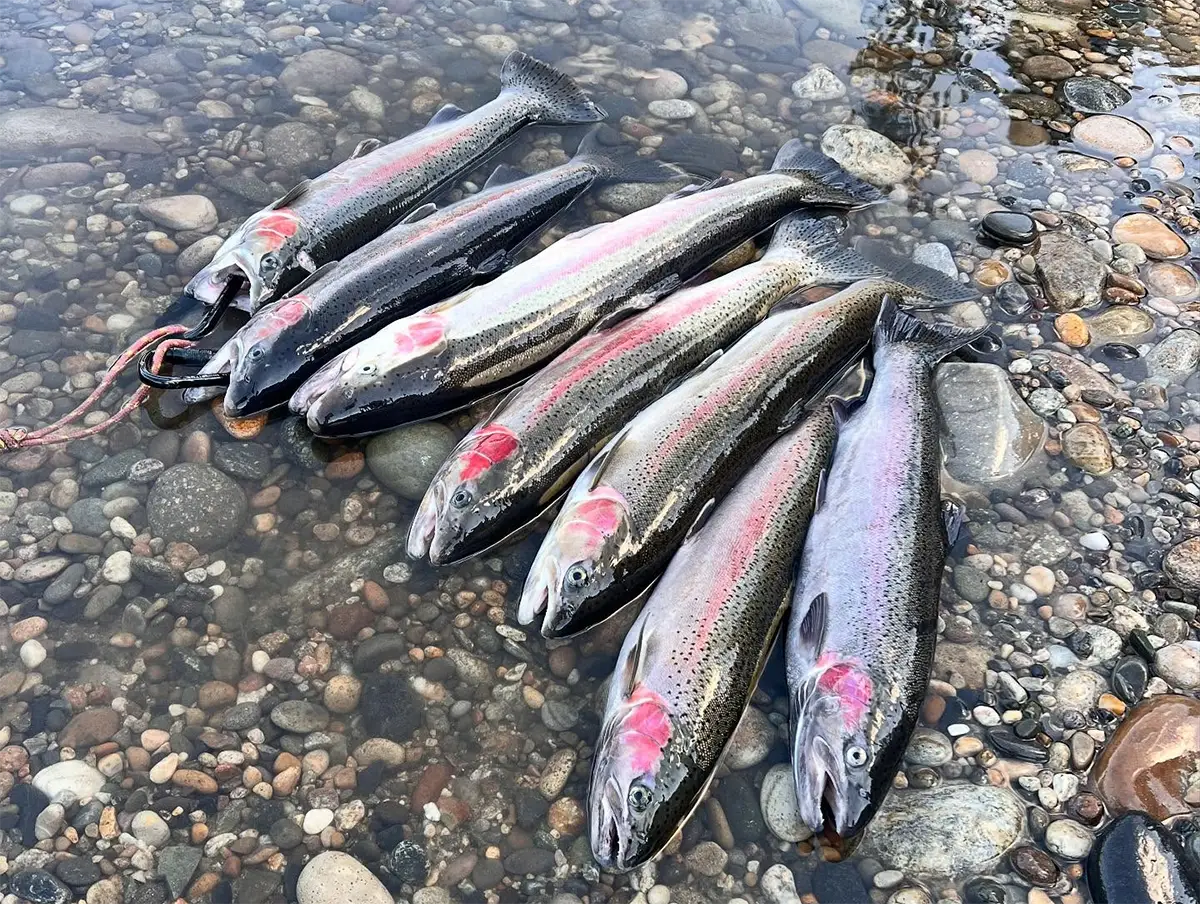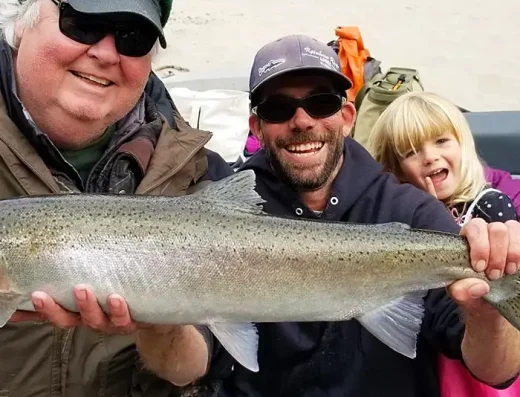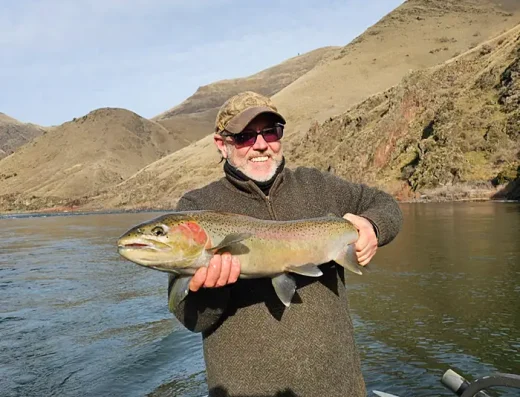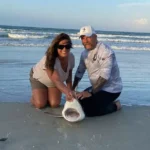November fishing in Idaho is built around cold water, steady flows and the arrival of strong steelhead runs across the Clearwater and Salmon River systems. The month delivers colder mornings, shorter daylight and unpredictable weather, but it also brings some of the most dependable action of the late season. In the Lewiston, Orofino, Riggins and White Bird corridor, guides continue to run full-time through November because the fishing remains productive. With the right clothing and realistic expectations, anglers can access one of the Northwest’s most consistent fall fisheries.
Lewiston in November
Lewiston is the gateway to the B-run steelhead fishery. These fish push into the lower Clearwater through October and settle into holding water once temperatures drop in November. This stretch produces some of the largest steelhead of the season, with fish staging in seams, tailouts and deep slots close to the confluence with the Snake. November conditions mean colder air, a slower bite early in the morning and more predictable action once the sun reaches the water. Most guides in Lewiston run drift-boat or jet-boat trips targeting these travel lanes, adjusting depth and presentation as flows change. The cooler the water becomes, the more important it is to slow the drift, stay in contact with the bottom and make repeated passes through prime slots.
November is also a period of reduced pressure. Summer crowds are gone, and locals focus on the strongest mid-day window. Running a guided trip in Lewiston during November still offers a full day of action, but the cadence is different: slower starts, concentrated bite periods and heavier fish. Layered clothing is essential, as weather can quickly shift between rain, wind and clear cold skies. For anglers flying in or traveling long distances, Lewiston is the most convenient entry point with reliable access roads, plenty of lodging and easy meeting points for guides.
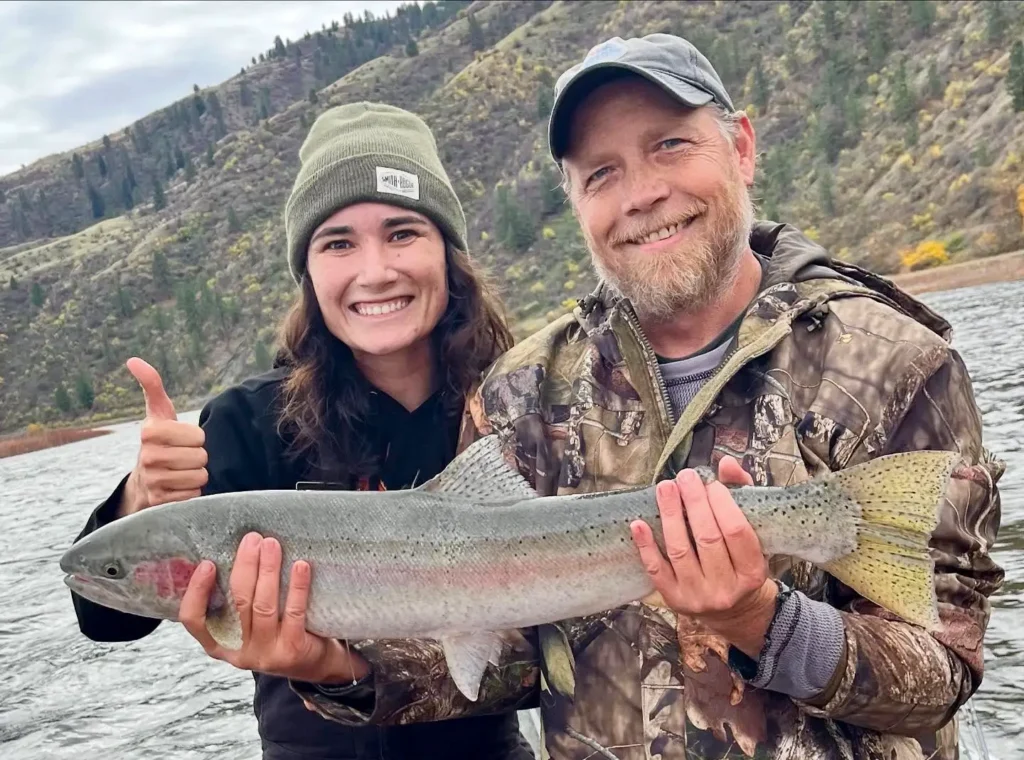
Orofino in November
Further upriver, Orofino delivers a quieter, more controlled version of the same steelhead fishery. The fish that stack in this region have already pushed through the lower river and settle into deeper holding zones along long glides and tailouts. November forces a change in tactics: slower drifts, longer leaders and precise boat positioning. Guides often adjust to bait and soft presentations as the water cools, and side-drifting becomes one of the most effective methods. Because this stretch sits closer to Dworshak and receives colder water from the reservoir system, the temperature drop in November can be more pronounced, which concentrates fish in fewer, well-defined seams.
Fishing out of Orofino in November feels different from Lewiston. The canyon is quieter, the pressure is lighter and the water colour often stays clear unless heavy rain pushes through. This region produces consistent catch rates for anglers willing to fish slowly and make repeated passes. Many guide services run extended seasons here specifically because November can be one of the most stable months before winter storms set in. Expect cold mornings, calm afternoons and fish that respond best to controlled drifts and natural presentations.
Riggins in November
Riggins sits on the Salmon River, a deeper and more rugged canyon system that fishes well in late fall. Steelhead enter this corridor through October and continue to move upriver during early November. The terrain is steep, remote and scenic, which is part of the draw. November fishing here is built around a combination of drift-boat floats and walk-in slots that hold fish once water temperatures fall. Unlike the Clearwater, the Salmon River has a different character: broader shelves, deeper canyon shadows and long boulder fields that create classic steelhead water.
In November, the bite often tightens to the warmest part of the day, and success comes from covering water methodically. Fly anglers target these fish with swing setups, using two-handed rods and sink tips to reach deeper runs. Gear anglers drift bait, yarn patterns or jigs along current seams with longer leaders and subtle movement. Because Riggins is more remote, anglers must prepare for cold wind, early snow and sections of road that can frost over. Guides here run every day the weather allows, and November remains an active month because fish numbers are solid and pressure is low.
White Bird in November
North of Riggins, White Bird anchors another productive section of the Salmon River. The canyon walls open slightly here, and the river stretches into longer runs with defined holding water for steelhead. November is a transitional month in White Bird: the early-season fish continue moving upriver, while later arrivals settle into the deeper mid-river flats. Guides working this sector rely heavily on controlled drift-boat passes and precise anchor points to work long seams.
Fishing White Bird in November is a balance of patience and timing. The first few hours of daylight tend to be slow, but once temperatures rise even slightly, fish respond well to slower drifts, downsized offerings and repeated presentations. The scenery is dramatic during this month, with snow dusting higher ridges and the canyon producing strong light transitions throughout the day. Because fewer anglers reach this part of the river in November, the water feels untouched, and action can be steady once fish settle into predictable slots.

What Makes November Good Across All Four Areas
November concentrates steelhead in ways that benefit both guides and anglers. Lower temperatures slow migration, causing fish to hold in specific, repeatable zones. River levels are generally stable unless a warm rain hits, and the combination of cold water and shorter days creates tighter windows of feeding activity. Fewer boats on the water mean less pressure, and guides who specialize in these rivers adjust techniques daily based on temperature, flow and depth. Light drift-fishing, side-drifting and controlled swinging cover almost everything you need in these systems during November.
The most important factor is preparation. November is cold. Air temperatures can start near freezing, and water temperatures can drop quickly through the month. Layering is essential, as is waterproof outerwear, insulated waders, good boots and gloves. Because the best action often happens mid-day, many trips begin later than they would in summer. This schedule change improves success rates and keeps anglers more comfortable.
Trip Logistics and Practical Details
November trips across Lewiston, Orofino, Riggins and White Bird range from half-day to full-day floats and jet-boat runs. Most guides offer all gear: rods, reels, tackle, bait and safety equipment. Anglers are responsible for an Idaho fishing licence and a steelhead permit. Rates vary by river and type of boat but generally fall between the mid-$200s per person on shared trips to higher rates for private full-day floats. Because November is still prime for steelhead, early booking is recommended for weekends, while weekdays remain more flexible.
Travel access varies by location. Lewiston is the easiest to reach, with major highways and full-service lodging. Orofino requires additional drive time but offers a quieter setting. Riggins and White Bird lean into the canyon experience with fewer services but more dramatic scenery and lower pressure. All areas require winter-ready clothing and the expectation that weather can shift quickly.
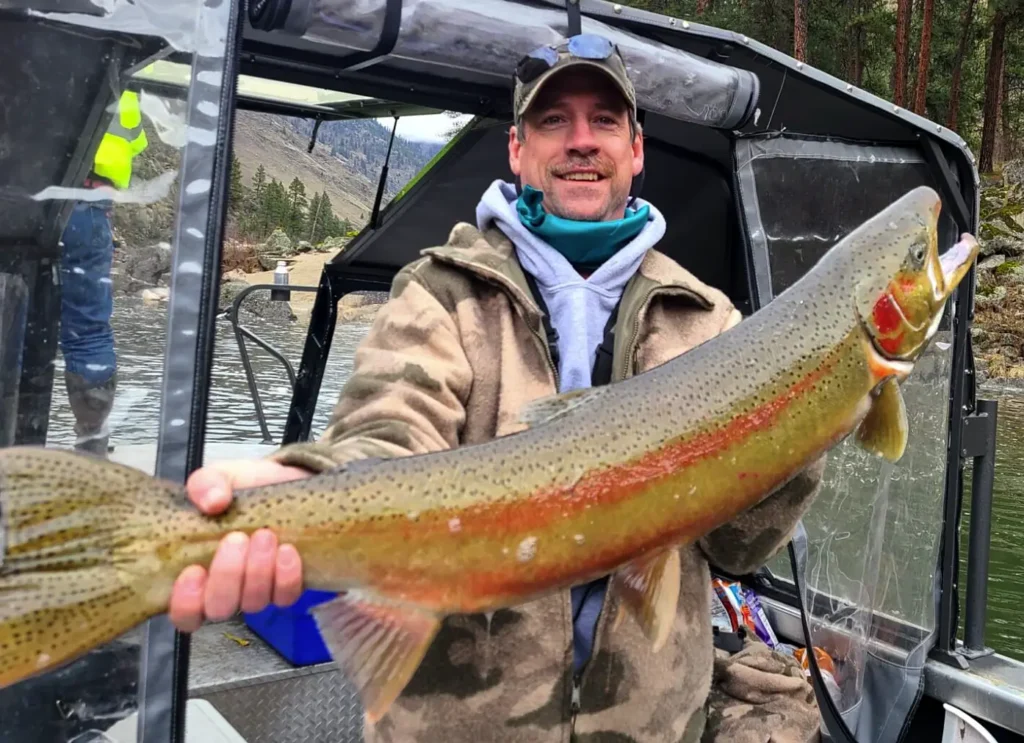
Why Book an Idaho Guide in November
Booking a guide in November is the most reliable way to get on fish across the Clearwater and Salmon River systems. Steelhead hold tight to specific slots during cold water, and guides who run these rivers daily know where those zones shift as temperatures drop. November is not a month for guesswork. Productive fishing depends on boat control, precise drifts and reading subtle changes in flow speed. Local guides make those adjustments in real time, which is why catch rates in November remain strong even when conditions are tough.
A guided boat also gives you coverage you cannot get on foot. In Lewiston, Orofino, Riggins and White Bird, many of the best travel lanes sit mid-river or just off deep seams that are inaccessible from the bank. Drift boats and jet boats give you repeated passes through holding water, and that repetition is what produces hookups during short feeding windows. With fewer boats on the water in November, a guide can work an entire stretch methodically without pressure or competition.
Equipment support is another key advantage. November fishing demands warm layers, insulated waders, stable footing and rods tuned for cold water techniques. Guides supply the right gear and simplify the setup so you can focus on the bite instead of rigging in freezing conditions. They also handle safety, boat positioning and river navigation during the early winter shift. This keeps the day efficient and gives you more direct time on fish.
Booking directly with a captain is the final piece. Direct contact ensures you get accurate updates on conditions, exact meeting locations, what to bring and how the river is fishing that week. It also puts your money in the hands of the people running the boats instead of large platforms taking commissions. In Idaho’s November steelhead season, the strongest results come from working with guides who operate these waters daily and understand how fish respond to each cold front, flow bump and temperature swing. Direct booking protects your trip and puts you in the best position to succeed.
Final Word on November Fishing
Fishing Idaho in November is a cold, quiet and highly productive experience when you know where to go and how the fish behave. Lewiston offers convenience and big-fish potential. Orofino provides technical water and steady action in clear conditions. Riggins delivers rugged canyon fishing and strong mid-day bites. White Bird adds long, calm stretches of river where fish settle deep and stay predictable. For anglers willing to trade warm weather for consistent late-season steelhead, November remains one of the best months of the year across this entire corridor.

